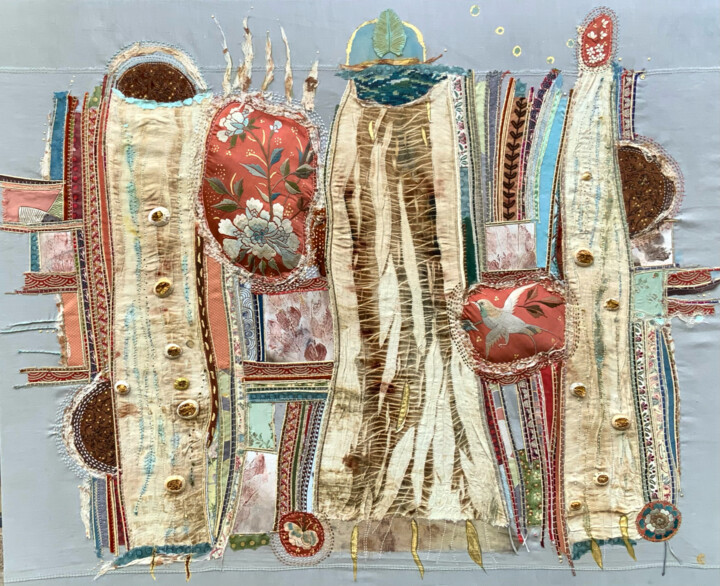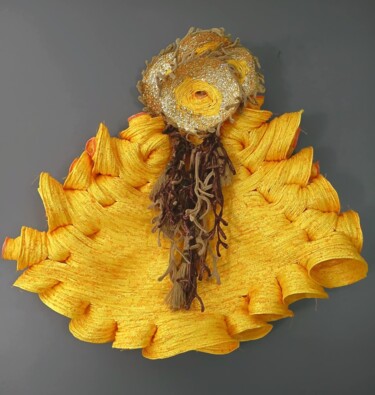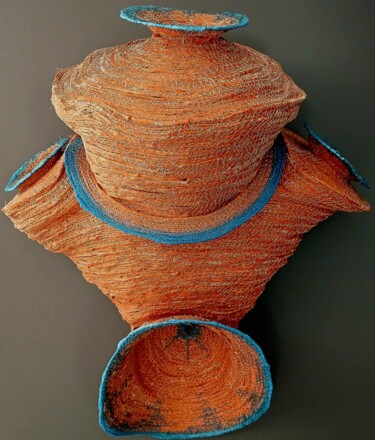87 原始纺织艺术品出售:
你在找出售原始纺织艺术品吗?
探索纺织艺术的所有风格和技术。 ArtMajeur 面向所有艺术情感,20 年来一直在您身边庆祝美丽,拥有超过 360 万件当代艺术作品供您发现……或获取!发现来自世界各地的当代艺术家的作品,用一流的方式装饰您的室内!单纯的艺术爱好者还是公认的收藏家?找到最喜欢的画布或绘画,真正增强您的装饰效果。 ArtMajeur 为您提供世界上最优秀的当代艺术家的原创作品、限量版和艺术版画。在 ArtMajeur 上,纺织艺术作品由艺术市场的爱好者和专家挑选。我们为您精选时尚、屡获殊荣的知名艺术家的原创作品以及当代艺术领域的新兴价值,为您在线购买纺织艺术品提供指导和帮助。
Discover contemporary World Culture Textile Arts on ArtMajeur
Contemporary World Culture Textile Arts have been flourishing in recent years, with artists from around the globe creating original and stunning pieces that capture the imagination. These artworks are created using a variety of supports, including fabric, yarn, thread, and paper, and often incorporate techniques such as weaving, embroidery, and quilting. One of the unique things about this type of artwork is the way it combines traditional techniques with modern designs, resulting in pieces that are both beautiful and meaningful. In addition, many contemporary textile artists are exploring issues such as identity, gender, and culture through their work, making these pieces not only visually striking but also thought-provoking. Overall, contemporary World Culture Textile Arts are an exciting and vibrant form of art that reflects the diversity and creativity of our world today.

©2025 Richard Harding
Origins and History
Contemporary World Culture Textile Arts have emerged from a long and rich history of textile traditions from around the world. From ancient civilizations to modern times, textiles have been an integral part of human culture. The art of textile making has been practiced for thousands of years, with evidence of weaving dating back to the Neolithic period. Different civilizations developed their own unique techniques and styles, such as the intricate brocades of ancient China or the bold geometric patterns of the Navajo people. The Industrial Revolution in the 19th century brought about mass production of textiles, leading to the globalization of textile trade and the blending of different cultural styles. Today, contemporary textile artists continue to draw inspiration from traditional techniques and materials, while also incorporating new technologies and materials. The exploration of themes such as identity, gender, and politics has also become an important aspect of contemporary textile art. The evolution of World Culture Textile Arts continues to be shaped by a rich history of cultural exchange and artistic innovation.

©2023 Corinne Chapelle
Evolutions of theses works in the contemporary art market
Contemporary world culture textile arts have undergone a significant evolution in recent years, with artists from diverse backgrounds exploring traditional techniques and materials to create innovative pieces. This evolution has led to a heightened appreciation for the significance of textile arts in contemporary art, resulting in increased demand for these works in the art market. The incorporation of cultural and personal narratives in textile pieces has also attracted interest, prompting important queries about the intersection of art, culture, and identity.

©2014 Dan Jun
Related Famous Artists
Contemporary artists are renowned for their exceptional work in World Culture Textile Arts. From traditional to modern, these artists have diversified the field of textile art, bringing it to the forefront of contemporary art.
Faith Ringgold is a well-known artist who has been creating textile arts since the 1960s. She is famous for her story quilts that depict African American life and history. She uses textile art as a medium to tell stories and communicate her experiences.
Yinka Shonibare is a British-Nigerian artist who uses textiles to explore the issues of identity, colonialism, and globalization. His work features brightly colored fabrics with African patterns that are used to create sculptures and installations.
El Anatsui is a Ghanaian artist whose work employs textiles, recycled materials, and found objects to create large-scale installations that comment on African history and culture. His work has been exhibited in major museums and galleries around the world.
Bisa Butler is an American artist who creates quilts that celebrate African American culture and history. Her work features vibrant colors and intricate patterns that are made with fabrics and textiles from around the world.
Ai Weiwei is a Chinese artist who incorporates textiles into his installations and sculptures to comment on social and political issues. His work often features traditional Chinese textiles, like silk and embroidery, and he has used them to create large-scale installations that comment on human rights and freedom of expression.
These artists have significantly contributed to the development of World Culture Textile Arts, and their work continues to inspire and challenge contemporary art.

©2023 Dalianna
Notable contemporary World Culture Textile Arts
Contemporary World Culture Textile Arts showcase the beauty and diversity of traditional textile techniques from around the world, reinterpreted by modern artists. Here are some examples of well-known artworks and their creators:
"The Dinner Party" by Judy Chicago (1979) is a monumental installation featuring a triangular table set for 39 historical and mythical women, each represented by a unique plate and runner. The artwork celebrates the achievements of women throughout history and challenges traditional notions of art and craft.
"Kuba Cloth" by El Anatsui (2005) is a shimmering tapestry made from thousands of aluminum and copper wire loops, inspired by the woven and embroidered textiles of the Kuba people of the Congo. The artwork transforms humble materials into a dazzling, fluid sculpture that evokes both African traditions and contemporary abstraction.
"Weaving Shibusa" by Devin Pedzwater (2015) is a documentary film that explores the Japanese art of denim weaving, known as "shibusa". The film follows the artisans of the Okayama prefecture as they create denim fabrics using traditional techniques and natural dyes, and highlights the importance of craftsmanship and sustainability in modern fashion.
"Suspended Territories" by Faig Ahmed (2015) is a series of handwoven carpets that combine ancient Azerbaijani rug patterns with contemporary glitches and distortions, creating a surreal and disorienting effect. The artwork questions the stability and identity of cultural traditions in a rapidly changing world, and invites viewers to reconsider the boundaries between art and design.
"Identity Tapestry" by Sonya Clark (2015) is an interactive installation made of human hair, woven into a colorful tapestry that invites visitors to add their own strands. The artwork explores the complex and intertwined histories of race, culture, and identity, and encourages dialogue and reflection on these issues.
These examples demonstrate the richness and relevance of contemporary World Culture Textile Arts, which bridge the past and the present, the local and the global, and the personal and the political. Through their creativity and skill, these artists connect us to our shared humanity and inspire us to imagine new possibilities for ourselves and our world.




































